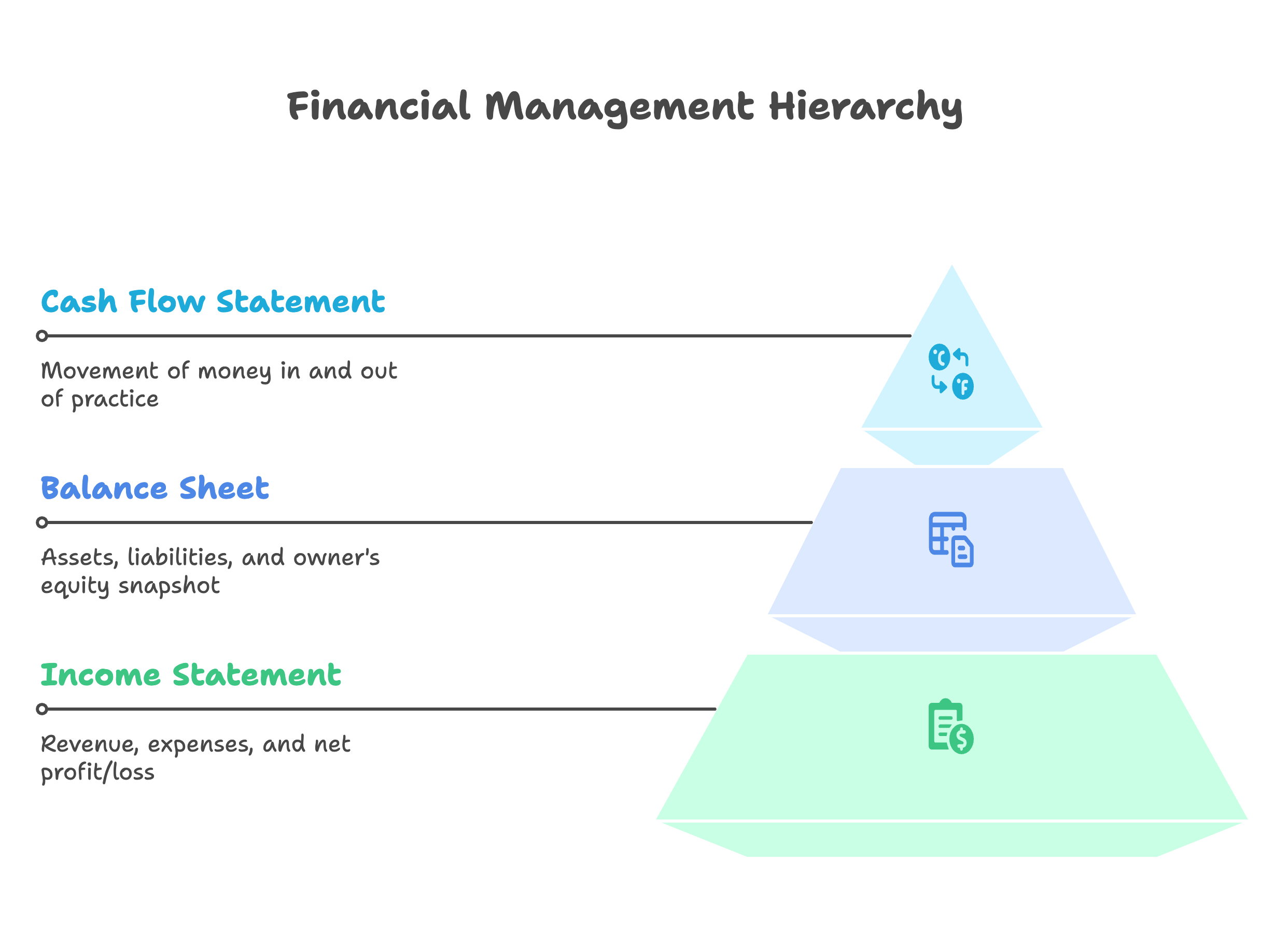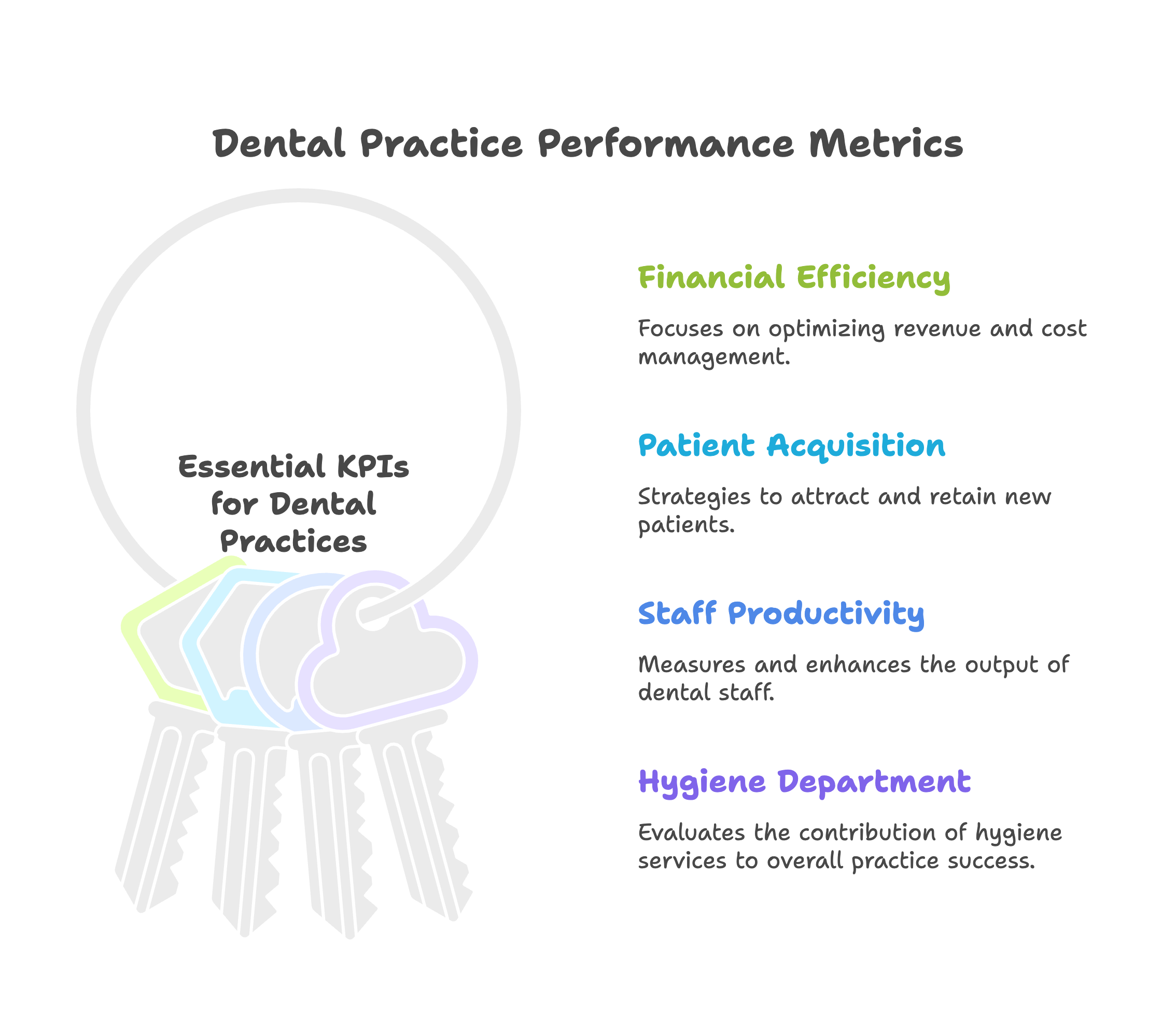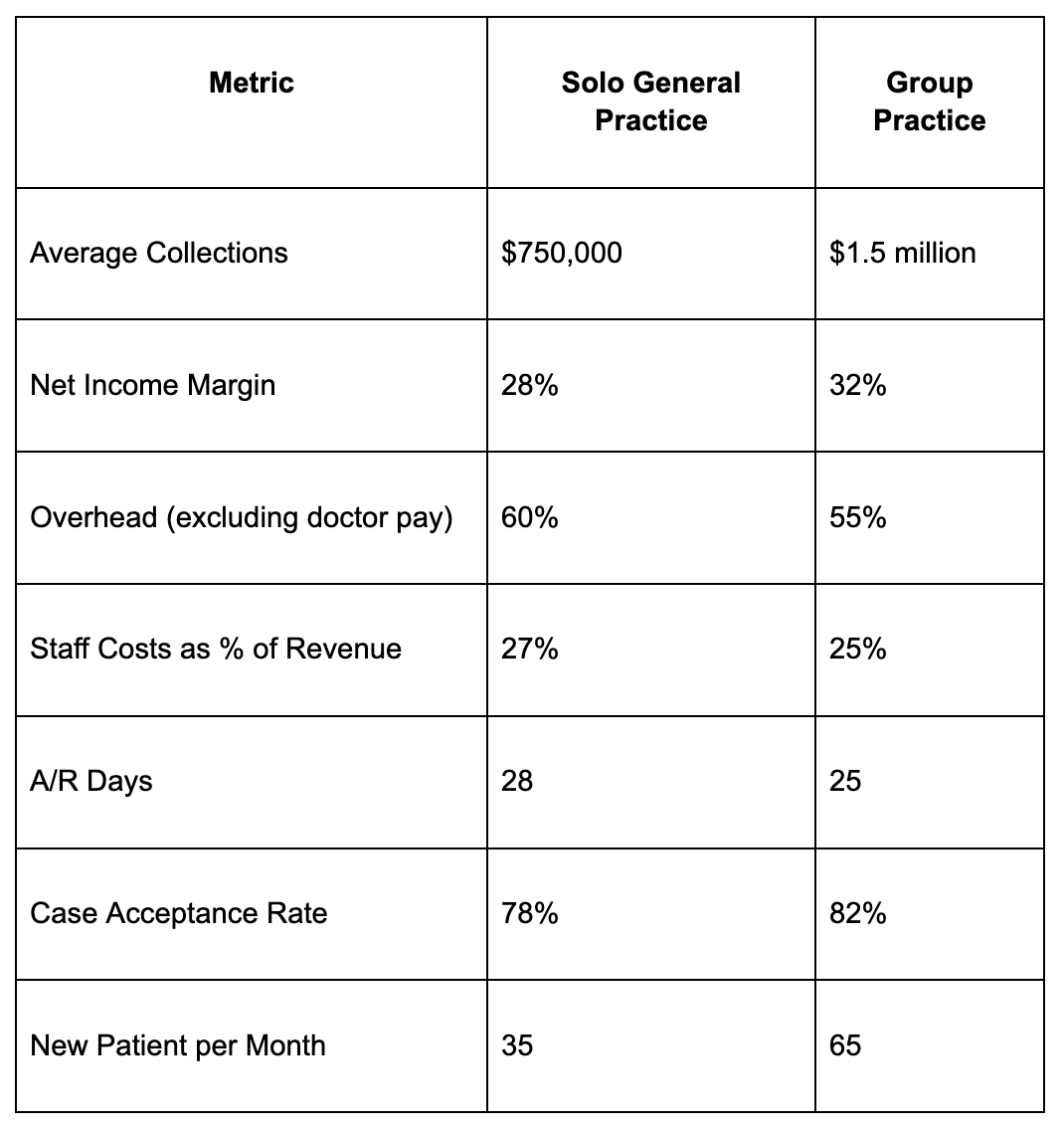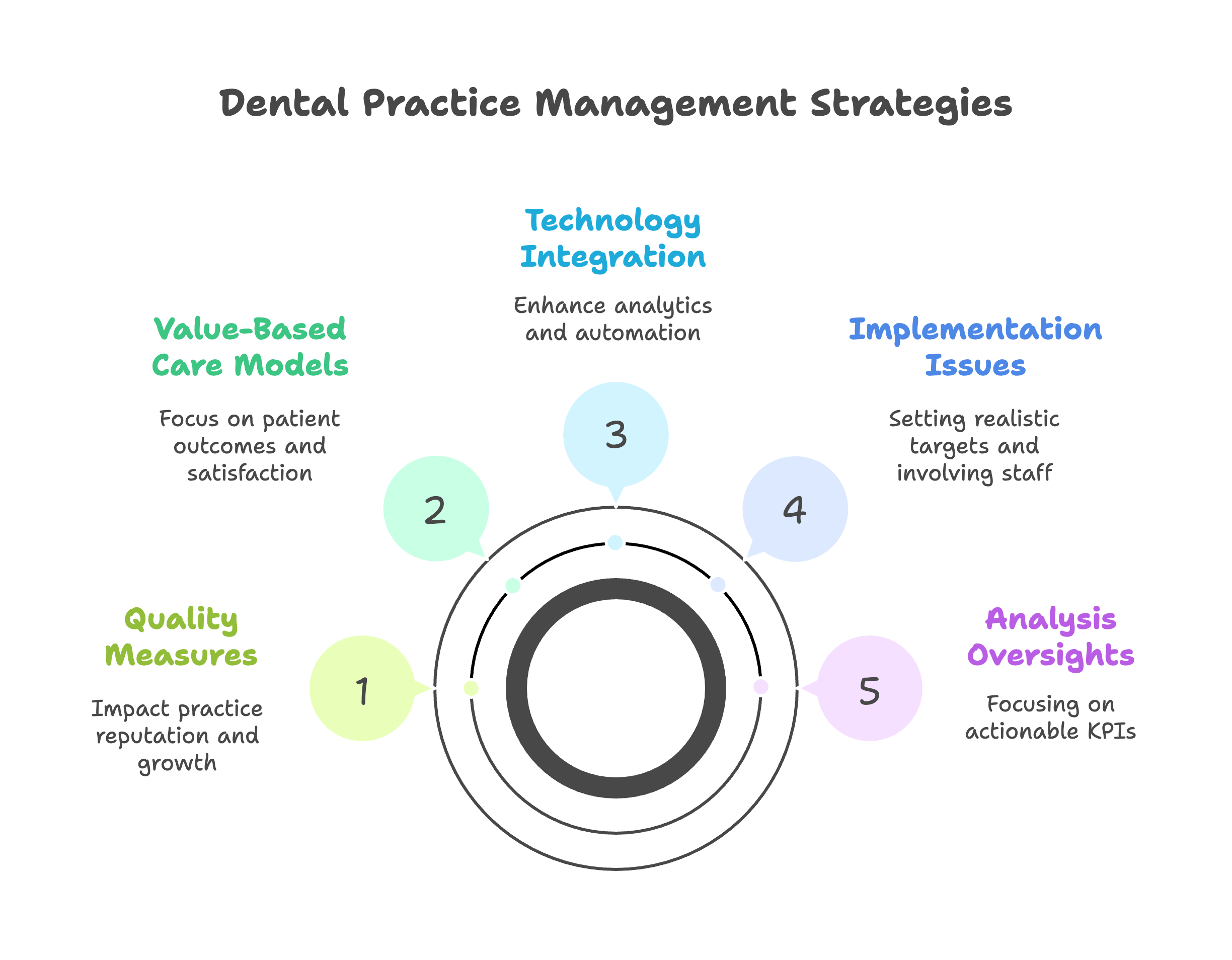Meta Description: A detailed guide to financial management for dental practices, focusing on the essential metrics and KPIs that drive profitability, operational efficiency, and long-term growth.
Slug: /dental-practice-financial-management-key-metrics-and-kpis
Running a successful dental practice requires more than clinical expertise. While patient care remains the cornerstone of dentistry, the ability to manage finances effectively is what separates a thriving clinic from one that struggles to survive. Understanding and tracking the right KPIs is essential for maintaining financial health and ensuring long-term success.
A dental practice faces unique financial challenges. From high overhead costs and equipment purchases to fluctuating patient volume and complex insurance billing, the financial landscape can be difficult to navigate without clear insight into the numbers. Effective tracking of KPIs helps practice owners make informed decisions based on data rather than intuition.
This guide breaks down the key performance indicators and financial principles every dental practice should monitor. Whether you are a solo dentist, part of a group practice, or a CPA advising dental clients, the goal is to help you understand what really drives financial performance and how to leverage KPIs to identify areas for improvement and growth opportunities.
Many dental professionals graduate with strong clinical skills but limited financial training. This often leads to blind spots in operations that can significantly impact the financial health of a dental practice, such as:
Good financial management and consistent monitoring of key performance indicators helps practice owners:
Most importantly, tracking the right KPIs brings clarity to how each aspect of the dental practice contributes to the bottom line and helps identify opportunities for optimization.
Before diving into specific KPIs, it is essential to understand the basic financial documents that form the foundation of any dental practice's accounting system and support effective practice management.
Shows revenue earned, expenses incurred, and net profit or loss over a given period. Key categories include:
Provides a snapshot of assets, liabilities, and owner's equity at a specific point in time. This metric helps track:
Details the movement of money in and out of the dental practice. It shows:
These three statements provide the data foundation needed to calculate and monitor essential KPIs for comprehensive financial management.

Now that the foundational reports are in place, let's explore the most important key performance indicators to track on a monthly or quarterly basis. These KPIs give insights into patient volume, profitability, staff productivity, and overall business health of your dental practice.
Production refers to the value of services rendered. Collections are the actual payments received from patients and insurance. This fundamental KPI helps assess the efficiency of your billing processes.
This KPI shows how long it takes to collect payments from patients and insurance companies.
This critical metric measures how much of your revenue goes toward operating expenses.
This KPI reflects the percentage of revenue left after covering all expenses.
This metric assesses the productivity of your hygiene department and its contribution to overall practice success.
This KPI tracks how much revenue each dentist or hygienist generates daily.
Staffing is often the largest expense in a dental practice, making this a crucial KPI to monitor.
A growth-oriented dental practice tracks new patient flow closely as a key performance indicator of marketing effectiveness and practice growth.
This KPI measures the percentage of treatment plans accepted by patients, directly impacting revenue and profitability.
This metric tracks how well you retain patients by scheduling future visits, supporting predictable revenue.

Beyond the fundamental metrics, successful dental practices track additional key performance indicators to gain deeper insights into their operations:
To get the most from your KPIs, establish a monthly review process that includes key performance indicators analysis:
This review should involve the dentist-owner, office manager, and, ideally, a CPA or financial advisor to ensure comprehensive analysis of all key performance indicators.
Comparing your KPIs to national or regional benchmarks provides valuable context for understanding your dental practice performance. Industry surveys by ADA and Dental Economics provide detailed benchmark data by practice type, location, and size.

Use benchmark comparisons to identify areas where your dental practice excels and areas needing improvement, but tailor actions to your specific situation and patient demographics.
Modern dental practices should leverage software tools for financial visibility and automated KPI tracking:
These tools reduce manual reporting burden and help identify trends faster, enabling more proactive practice management.
Working with a CPA who understands dental practice operations and KPIs provides several benefits:
Many dental practices also outsource functions like payroll, accounts payable, and financial analysis to reduce administrative burden and ensure accurate tracking of essential KPIs.
Here are actionable ways to boost profitability and operational health based on KPI analysis:
Strong financial management and consistent KPI tracking also supports long-term goals such as:
Clean financial records and well-documented key performance indicators increase practice valuation and reduce transition risk when planning for retirement or sale.

Financial success in dentistry does not happen by chance. It requires intentional tracking of key performance indicators, regular financial reviews, and a commitment to continuous improvement. Understanding and monitoring the right KPIs enables dental practice owners to make informed decisions that drive growth and profitability.
By consistently monitoring essential metrics such as case acceptance rates, cash flow patterns, and the number of new patients, dental practice owners can:
A data-driven approach to practice management transforms your dental practice from a reactive business into a strategically managed enterprise. The systematic tracking of KPIs provides the foundation for identifying opportunities, optimizing operations, and building a sustainable, profitable practice.
Working with experienced professionals who understand dental practice metrics and key performance indicators ensures that your financial management strategy aligns with industry best practices and supports long-term success. Regular benchmark analysis and consistent KPI monitoring create the framework for continuous improvement and sustained growth in an increasingly competitive healthcare environment.
Question: What are the most important financial KPIs that dental practices should track regularly?
Answer: Essential financial KPIs for dental practices include production per hour, collection percentage, overhead percentage, accounts receivable aging, and profit margins by service type. Key metrics cover new patient acquisition costs, patient lifetime value, appointment utilization rates, and revenue per patient visit. Monitor case acceptance rates, treatment plan conversion percentages, and insurance versus private pay ratios. Additional important KPIs include staff productivity measures, cost per patient acquisition, and seasonal revenue variations. These metrics help practice owners understand profitability, operational efficiency, patient satisfaction, and growth opportunities while identifying areas requiring management attention and improvement.
Question: How should dental practices calculate and improve their collection rates?
Answer: Calculate dental practice collection rates by dividing total collections by total production (services provided) over specific periods, typically aiming for 95-98% collection rates. Improve collections through accurate insurance verification, prompt claim submission, effective patient communication about financial responsibility, and systematic follow-up on outstanding accounts. Implement point-of-service collection procedures, offer payment plans for large treatments, and use automated reminder systems for overdue accounts. Train staff on insurance procedures, establish clear financial policies, and consider professional collection services for significantly overdue accounts. Regular monitoring of collection rates by insurance carrier and service type helps identify improvement opportunities.
Question: What overhead benchmarks should dental practices target for optimal profitability?
Answer: Dental practices should target total overhead percentages of 60-75%, with staff costs representing 22-28%, facility costs 6-10%, lab fees 8-12%, and supplies 4-7% of collections. General dentistry practices typically operate at lower overhead than specialty practices due to different equipment and staffing requirements. Monitor overhead trends monthly and compare to industry benchmarks for practice size and type. High-performing practices often achieve overhead ratios at the lower end of ranges through efficient operations, effective staff utilization, and strategic vendor negotiations. Regular overhead analysis helps identify cost control opportunities while maintaining quality patient care and competitive service offerings.
Question: How can dental practices optimize their accounts receivable management?
Answer: Optimize dental practice accounts receivable by implementing electronic claim submission, conducting thorough insurance verification, maintaining accurate patient information, and establishing systematic follow-up procedures. Aim for days in accounts receivable of 30-45 days maximum, with monthly aging analysis to identify collection issues early. Use practice management software for automated reminders, track claim status electronically, and establish escalation procedures for overdue accounts. Train staff on insurance procedures, implement clear financial policies communicated to patients upfront, and consider factoring services for difficult collections. Regular AR analysis by aging categories helps prioritize collection efforts and identify systemic issues requiring attention.
Question: What financial planning strategies should dental practices implement for long-term success?
Answer: Financial planning strategies for dental practices include developing annual budgets with monthly monitoring, establishing cash reserves for equipment purchases and emergencies, and creating retirement and succession plans. Implement systematic savings for equipment replacement, continuing education, and practice improvements. Consider tax planning strategies including retirement plan contributions, equipment depreciation elections, and entity structure optimization. Monitor key performance indicators monthly, conduct annual financial reviews, and establish relationships with dental-specific financial advisors. Long-term planning should address practice valuation growth, debt management, and personal financial goals while maintaining adequate cash flow for operations and growth investments.
Question: How do different dental specialties impact financial management and KPI targets?
Answer: Different dental specialties require adjusted financial management approaches and KPI targets based on varying service complexity, treatment durations, and equipment investments. Orthodontics involves longer treatment cycles requiring different cash flow management and collection procedures. Oral surgery and periodontics may have higher overhead due to specialized equipment and staffing requirements. Endodontics and prosthodontics often command higher fees but require significant technology investments. General practices benefit from diverse revenue streams while specialties may have more predictable but concentrated income sources. Tailor financial management strategies, benchmark comparisons, and growth planning to specialty-specific characteristics and industry standards.
Question: What technology investments provide the best ROI for dental practice financial management?
Answer: High-ROI technology investments for dental practice financial management include integrated practice management software, electronic claims processing systems, automated patient communication platforms, and digital imaging systems that improve efficiency and patient acceptance. Patient portal systems reduce administrative costs while improving patient satisfaction and payment processing. Automated appointment reminders reduce no-shows and cancellations that impact productivity. Electronic health records improve documentation efficiency and reduce liability risks. Evaluate technology investments based on time savings, error reduction, patient satisfaction improvements, and revenue enhancement potential. Focus on solutions that integrate well with existing systems and provide measurable returns on investment.
Question: How should dental practices handle insurance contract negotiations and fee schedule management?
Answer: Handle dental practice insurance contract negotiations by analyzing current fee schedules, comparing reimbursement rates across carriers, and evaluating patient volume versus reimbursement trade-offs. Negotiate based on practice quality metrics, patient satisfaction scores, and geographic market factors. Consider participating versus non-participating status implications for patient flow and collections. Monitor insurance mix regularly and make strategic decisions about contract renewals based on profitability analysis. Maintain detailed records of reimbursement rates, claim processing times, and administrative requirements for each carrier. Professional consultation may help with complex negotiations and contract analysis to optimize overall practice profitability while maintaining patient access to care.
.png)
December 9, 2025
A straight-talking overview of five small business tax prep options in 2025, including Madras Accountancy, TurboTax, H&R Block, TaxSlayer, and Bench’s books-plus-tax model.

December 9, 2025
An on-the-ground guide to the UK’s fractional CFO ecosystem – London and beyond – including The CFO Centre, fin-house, FD Capital, BKL, BSmart, and how Madras Accountancy fits into cross-border and hybrid models.